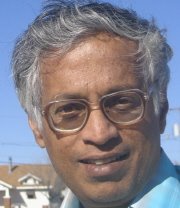Chowdiah, bowing to genius
Dr. K. Rohiniprasad


Born in Tirumakoodalu, Chowdiah (1895-1967) the great violinist was the son of Agastya Gowda. His mother Sundaramma who was herself a musician initiated him into the art. Believing in the prediction by a seer that he would become a famous musician, young Chowdiah abandoned regular school. This enabled him to concentrate on music lessons. After early training from his uncle, Chowdiah became the disciple of Bidaram Krishnappa, the legendary vocalist at the
Chowdiah's violin accompaniment for Ariyakudi’s concert in
An eminent solo violinist and a brilliant accompanist, Chowdiah’s fascinating finger-play and bowing techniques, clarity of expression and creative approach made him phenomenally popular. He became well-known for his rich imagination and skill and provided inspiration to many young violinists during his lifetime. In his concerts as an accompanist, Chowdiah was much respected and admired as he would always encourage and support the main performer. In 1939 he became the court musician at
In the early decades of the twentieth century, vocalists started adopting a lower pitch. With no amplifiers or loudspeakers, accompanying a powerful vocalist and a percussion instrument on the violin in a large auditorium required real effort in those days. Violins were not originally designed to meet this requirement. To match the change in the volume of music, Chowdiah tried to improve the volume of the sound from his violin. As an innovator and man of ideas, he developed with the aid of a craftsman, seven-stringed and nineteen-stringed violins. The additional strings resonated to the sound of the bowed string and produced greater volume. The agreeable and voluminous sound that resulted impressed everyone, including veterans like Veena Seshanna. However, with the advent of electronic amplification, these innovations gradually lost their relevance. It was no longer considered necessary to own such an expensive high-quality instrument.
Chowdiah established the Ayyanar College of Music in


0 Comments:
Post a Comment
<< Home